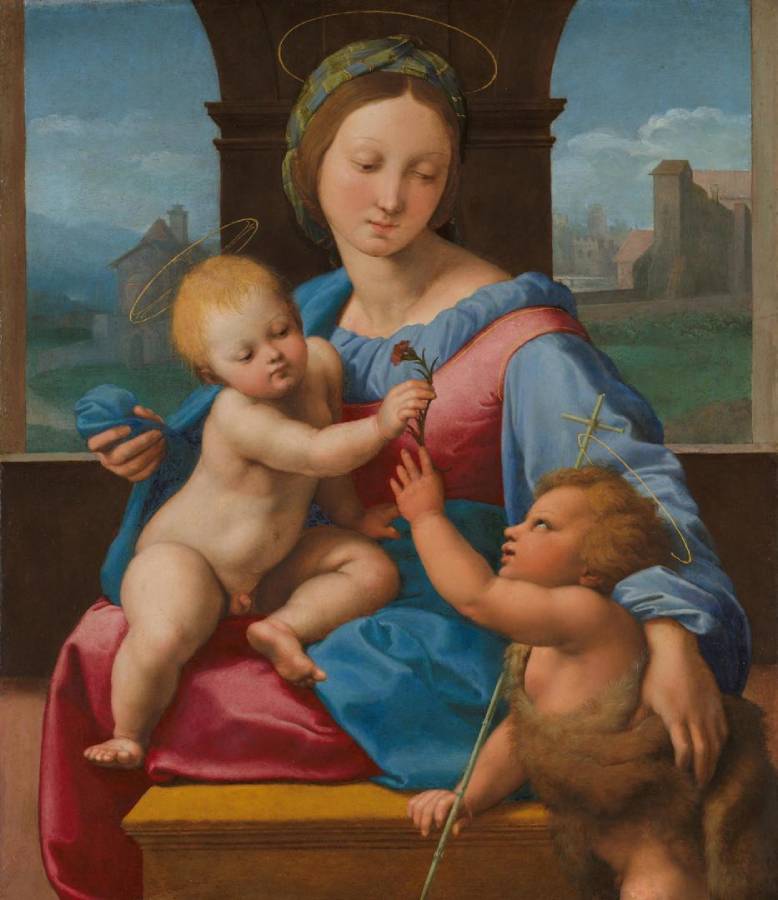Raffaello (1483-1520)
Madonna Garvagh / Madonna Aldobrandini (Garvagh Madonna or Aldobrandini)
c.1510–1511
Oil on wood, 38.9 × 32.9 cm
National Gallery, London
This is one of several small and medium-sized Madonnas made by Raphael in the years immediately following his arrival in Rome, at the same time as he was painting his masterwork – a suite of rooms in the Vatican palace for the pope, the so-called papal stanze. It was probably produced for a member of the papal court for private devotion, although we do not know who commissioned it. The painting is now known as the Garvagh Madonna or the Aldobrandini Madonna after two of its previous owners.
The Virgin Mary sits in a complex twisting pose – sideways on a simple bench or plinth with one leg tucked under the other. She wears a blue, green and gold striped headdress bound up into a turban-like arrangement which was probably fashionable in Rome during Raphael’s time. The infant Christ sits on his mother’s lap, looking down towards the young John the Baptist, who passes him a red carnation – symbolic of divine love and Christ’s future Passion. Their gazes suggest the thoughts that pass between them. The space between the children’s hands is the very centre of the careful geometry of the composition, emphasised by the lines of the architectural backdrop and the Virgin’s features.
Christ’s pose is very natural, although he seems to have an awareness greater than his years. The Virgin appears lost in melancholy thought as she draws John the Baptist’s soft fur pelt closer to him and gathers her mantle to cover the naked Christ. Perhaps she is thinking of the children’s destinies.
Two arched openings either side of the Virgin reveal views reminiscent of the countryside outside Rome. Through the left-hand arch is a church with a bell tower and hills shrouded in blue haze. A larger building, possibly also a church, is visible through the right-hand arch. In the underdrawing, the landscape continues beneath the central architecture, suggesting that Raphael first intended to set the figures before a simple stone parapet but then changed his mind. The vivid colours of the Virgin’s clothes – the bright pink of her dress and two subtly different blues of her shirt and mantle – are echoed in the more soft and faded pastel hues of the misty landscape.
A study for the painting on pink paper in the Musée des Beaux Arts, Lille, shows that Raphael experimented with different positions for the children. There is no sign that the design for the final painting was transferred from a drawing, but there is a very precise geometrical plan in the underdrawing on the panel.
The dark backdrop and mouldings of the architecture very effectively frame the Virgin’s oval face and the delicate bend of her neck. This approach of showing the Virgin in an interior between two arched windows occurs in early works by Leonardo, and it is possible that Raphael had these examples in mind. The complex psychological interaction between the figures also reflects earlier innovations by Leonardo. The figures are perfectly integrated into their setting, creating a sense of order and calm contemplation. Raphael makes divine harmony visible through geometry. (NG)
